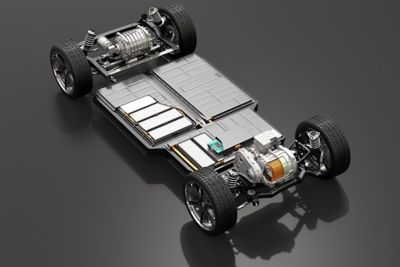-
-
学生向け無料ソフトウェアにアクセス
Ansysは次世代の技術者を支援します
学生は、世界クラスのシミュレーションソフトウェアに無料でアクセスできます。
-
今すぐAnsysに接続!
未来をデザインする
Ansysに接続して、シミュレーションが次のブレークスルーにどのように貢献できるかを確認してください。
国および地域
無料トライアル
製品およびサービス
リソースとトレーニング
当社について
Back
製品およびサービス
ANSYS BLOG
February 15, 2023
EV Motor Development: Finding Success with Multiphysics Simulation
Passenger electric vehicle (EV) sales are at more than 10 million units globally, up from 6.6 million in 2021, according to "The Zero-Emissions Vehicle Factbook1." In the first half of 2022, more than 13% of new car sales globally were electric, rising from 8.7% for all of 2021. As our primary mode of transportation steadily shifts to greener and cleaner sources, requirements for innovation are heightened. Environmental commitments by automakers and governments are at the wheel in this modern EV era, driving the development of new vehicle architectures that meet expectations for both volume and space reductions, combined with lower product costs and greater product reliability.
EV developers are finding a competitive edge through efficiency gains not only in new battery pack technology and electronic components, but also through new developments in electric machines.
Addressing Technical Barriers to Electric Motor Innovation
For decades, electrical machines have been an essential part of our daily lives. They enable us to engage in a variety of tasks, from cooking and computing to driving. But electric machines provide a number of advantages — precision, efficiency, and versatility — that come with a set of engineering challenges. In an EV, these challenges center around the electric traction motor, where there are so many variables to consider — such as drive cycles, maximum speed, noise, vibration, and more. These can have far-reaching consequences for overall vehicle performance.

Considering the source of noise and vibration in an electric powertrain, for instance, is a real multiphysics issue. An electric machine contains an inverter with high frequencies and a motor with low frequencies caused by electrical signals, which causes mechanical deflection and is the source for this noise and vibration. Engineering simulation offers the ability to prevent unforeseeable problems, like noise, vibration, and harshness (NVH), to predict realistic sound before any hardware is built.
As competition heats up in the electrification market, the increasingly complex matrix of engineering goals must be addressed within shorter product development cycles. Simulation delivers tremendous benefits that offer accurate information to support evaluations in a timely manner and keep track of every design decision. By integrating multiphysics analysis into the development of electric machines, designers can get a strong grasp on the electromagnetic, thermal, and mechanical aspects of motor design.
Getting as close to “right-the-first time” designs as possible requires the evaluation of many different concepts, topologies, and electronic interactions across disciplines. An agile development process and systematic design optimization strategy is key to identifying and implementing the best possible electric motor technology that will meet the efficiency, size, and power density requirements of an application. Using Ansys simulation software, for example, you can gain confidence with accurate high-fidelity models and establish a reliable basis for decision-making when balancing an array of vehicle requirements. You can assess conflicts with performance criteria as soon as they’re uncovered, with the possibility to look at them both independently and in concert over the full operating range using multiphysics simulation workflows by Ansys.
Developing differentiated and cost-competitive electric motors requires agility. Simulation delivers tremendous benefits that offer accurate information to support evaluations in a timely manner and keep track of every design decision. Electric machine designers can turn to simulation and modeling methods throughout the entire design cycle, including materials selection, system-level verification, and validation. Users can meet sustainability goals and perform highly accurate virtual prototyping with optimized material selection and management.
Differentiated Electric Motor Design with Ansys

Using Ansys electric machine solutions, designers and modeling experts can overcome the many multi-objective multiphysics challenges in EV electric drive systems. With ready-to-use workflows and embedded knowledge, they can simultaneously explore a large design space for major performance goals like electromagnetics, thermal, and mechanical.
- Ansys Motor-CAD: a dedicated electric motor design and analysis tool that offers rapid and comprehensive multiphysics evaluations of designs.
- Ansys Maxwell: an advanced 2D and 3D low-frequency electromagnetic field simulation solver for electric machines that captures the nonlinear, transient motion of mechanical components and their effects on drive circuit and control system design.
- Ansys optiSLang: a process integration and design optimization solution that automates key aspects of the robust design optimization process.
- Ansys Granta MI: a centralized and traceable materials database that combines company-approved proprietary data with valuable material reference data, allowing teams to quickly create, import, visualize, and analyze materials data.
Register today to attend several free webinars describing Ansys solutions for electric machine development used in automotive applications. Additionally, a series of courses dedicated to building know-how and expertise in simulation and modeling methods for electric machines can be found in the Ansys Learning Hub for Electric Machines.